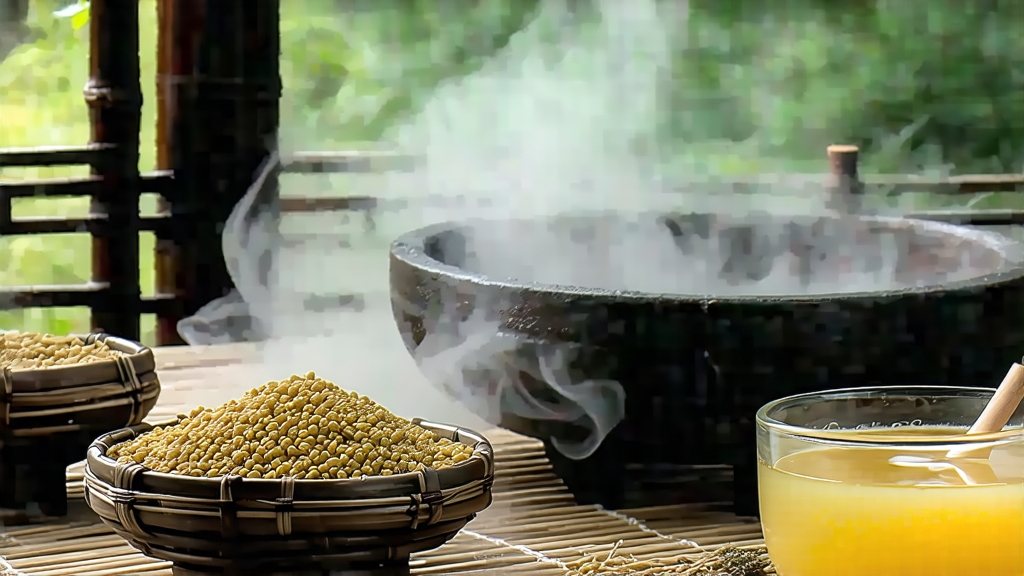
Tucked high in the mist-veiled Dabie Mountains of western Anhui Province, Huoshan Huangya has quietly embodied the elegance of China’s rarest tea category for more than fourteen centuries. While green teas grab global headlines and pu-erh auctions make financial news, yellow tea—huang cha—remains a whispered legend among Chinese connoisseurs, and Huoshan Huangya is its most luminous expression. To understand this leaf is to step into a world where emperors once rationed ounces, where monks measured time by the scent of warm straw, and where a single mis-timed breath can turn gold into green.
Historical scrolls first record the tea in 225 CE, when local magistrates offered “small yellow buds” to the court of Cao Pi, founding emperor of Wei. By the Tang dynasty the tribute had become codified: every spring, pickers climbed Bamboo Shoot Peak to harvest the first two leaves and a bud before Qingming festival, packing the tea in silk-lined bamboo tubes sealed with beeswax. The Song emperor Huizong—himself a skilled tea artist—declared Huoshan Huangya “the color of first-rank court robes,” a compliment that elevated its price above silver. After the fall of the Qing the tea faded from palace kitchens, surviving only in family lineages of tea masters who kept the secret of “sealed yellowing” alive through civil wars and market neglect. When China reopened to world trade in the 1980s, Japanese buyers searching for “the mellow cousin of gyokuro” rediscovered the leaf, and today small lots appear at specialty auctions in Paris and Dubai, still measured in hectograms rather than tons.
Huoshan County counts three micro-climates that shape Huangya’s character. Between 300 and 800 meters, morning clouds condense on granite outcrops, feeding slow-growing tea bushes rooted in acidic yellow-brown soil rich in selenium. The highest garden, Jinji Mountain, holds 800-year-old mother trees whose cuttings are now grafted onto drought-resistant rootstock. Farmers recognize three cultivars—Dabie Quntizhong, the local seed-propagated landrace; Huoshan 1, a 1973 clonal selection prized for its high theanine; and the newer Huangya Zaofeng, bred to germinate ten days earlier, extending the picking window. Each cultivar responds differently to the hallmark “menhuang” or “sealed yellowing” process, the enzymatic step that distinguishes yellow tea from green.
Picking begins when 5 % of the buds show a faint lemon edge, usually between March 25 and April 10. Experienced eyes prefer the standard “one flag, one spear”—the unopened bud sheathed by a just-unfurling leaf. Pluckers wear bamboo finger cots to prevent fingernail bruises, dropping the shoots into shallow wicker trays lined with mosquito netting. Within two hours the harvest must reach the village workshop, where three master craftspeople guide it through five meticulous stages.
Withering is brief: trays rest on racks above a gentle charcoal brazier set at 35 °C for 30 minutes, just long enough to reduce surface moisture without forcing grassiness. Next comes the initial kill-green in a wok heated to 160 °C. The master tosses 250 g at a time, his palm reading the leaf’s sigh through a callus built over twenty seasons. When edges feel like silk and the aroma shifts from raw pea to toasted chestnut, the tea is raked into a linen cloth and the true art begins.
“Sealed yellowing” is the soul of Huoshan Huangya. The cloth bundle is rolled tight, placed inside a wooden box lined with fresh rice straw, and buried under a 5 cm layer of the same straw. Over the next 48 hours the leaf ferments in its own residual heat and moisture, oxidizing subtly at the edges while the core stays green. Every six hours the master unwraps the bundle, fluffs the leaves to re-oxygenate, then re-wraps. When the straw smells of honey and the leaves have turned a uniform golden jade, the second wok firing fixes the color. Temperature drops to 80 °C; hand movements slow to a caress. A final low bake at 60 °C for three hours reduces moisture to 5 %, curling the buds into tiny sabers that gleam like polished ivory.
The